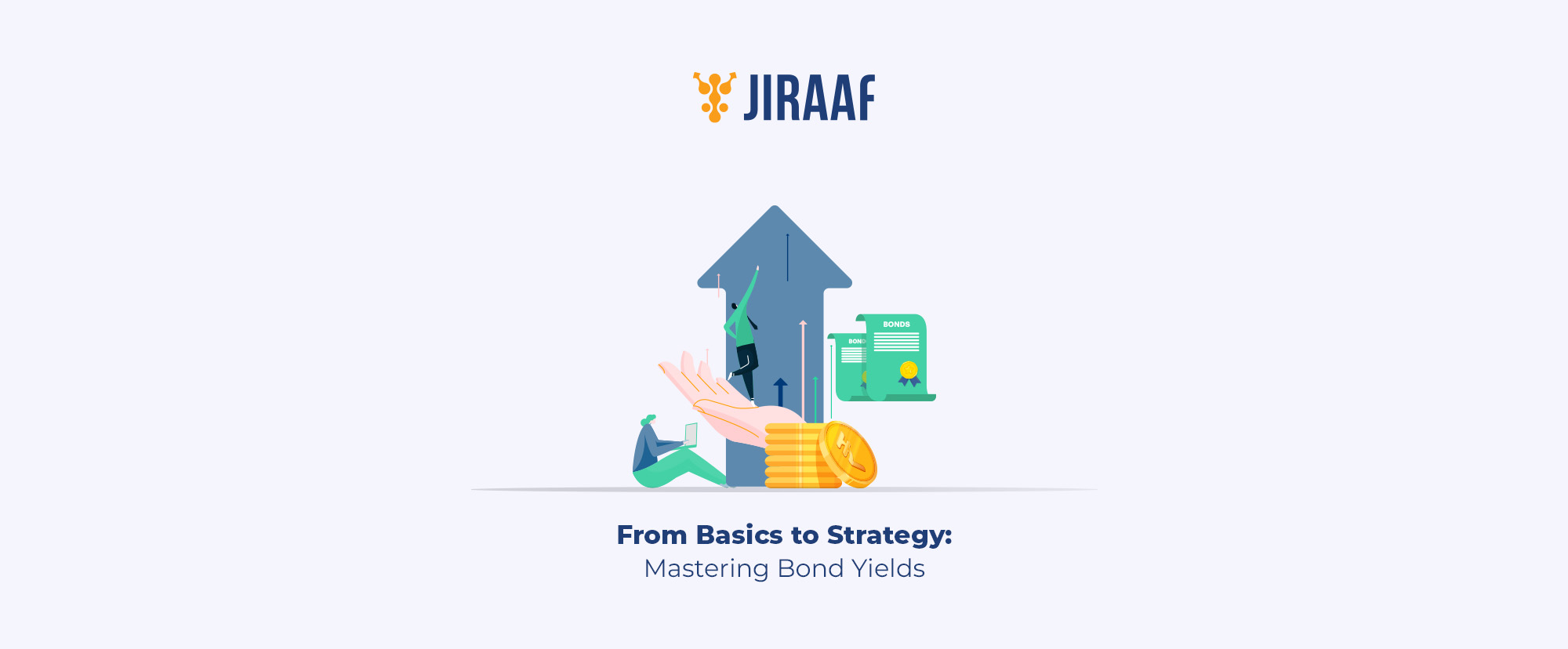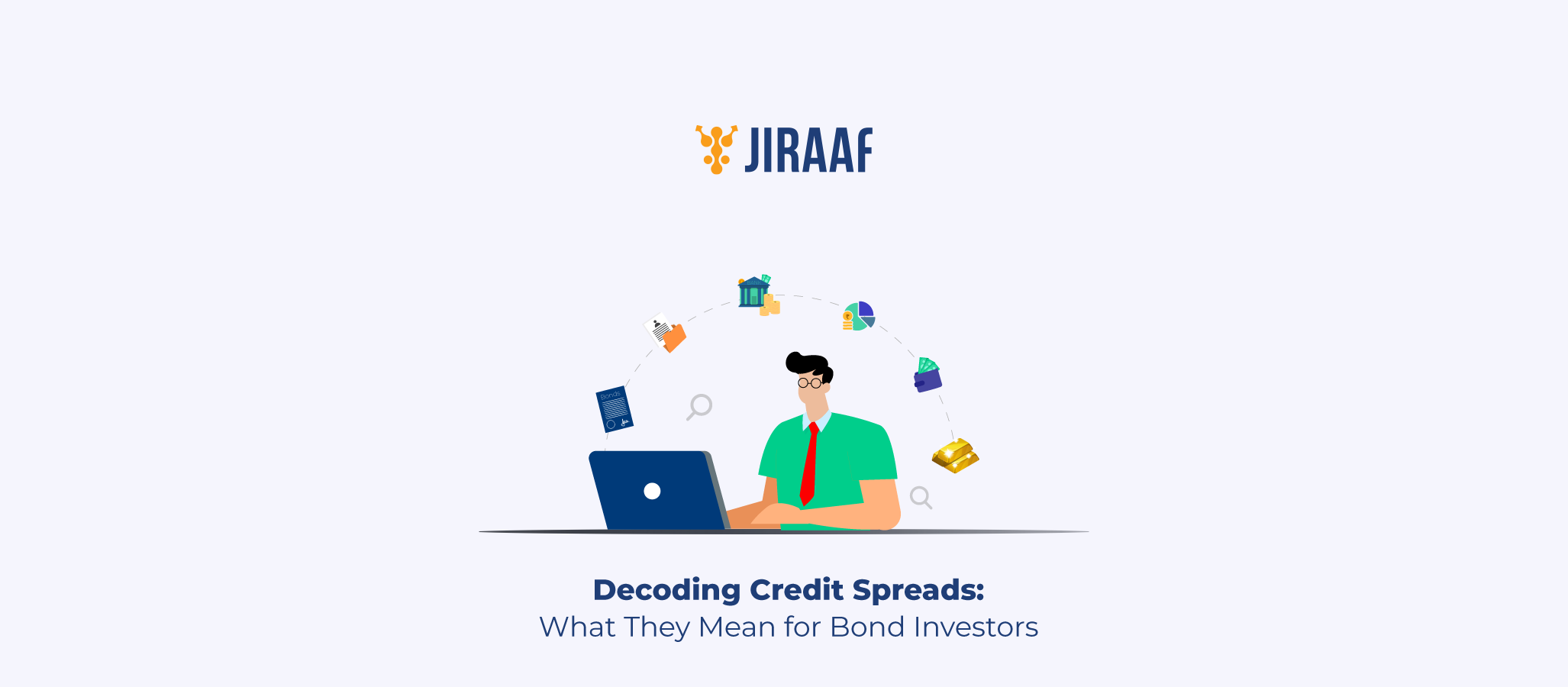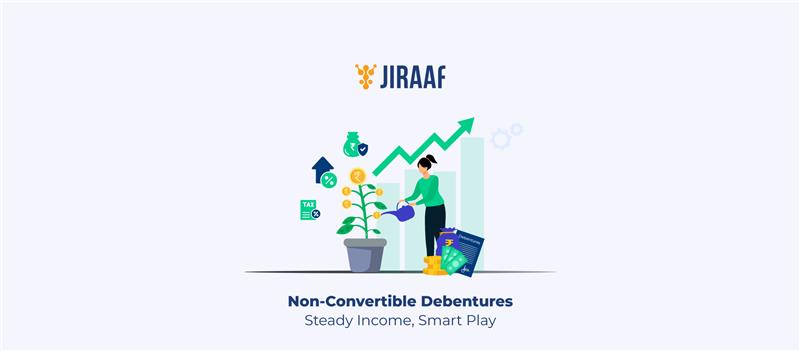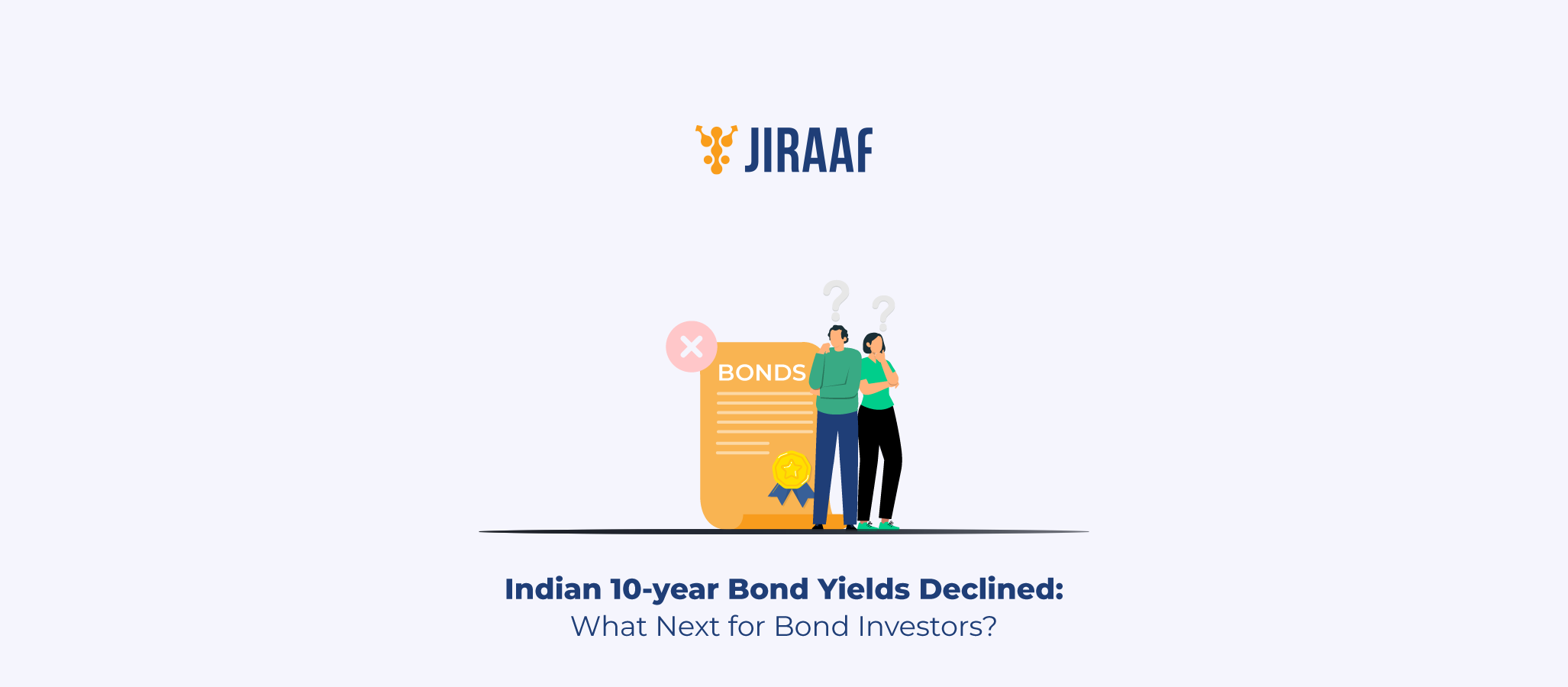As an investor, you’re likely juggling multiple decisions — choosing the right assets, balancing risks, and maximizing returns. In this maze of financial choices, bond yields are a valuable tool. Whether you’re diversifying your portfolio, assessing the value of fixed-income securities, or planning for long-term goals, understanding bond yields is essential.
But let’s be honest — terms like “bond yield” or “bond yield formula” can sometimes feel overly technical. What do they really mean for you as an investor? How do they impact your investments? And most importantly, how can they help you make smarter decisions?
This blog unpacks the concept of bond yields and explores why they’re more than just numbers; they’re a window into smarter, more informed investing.
What is a Bond Yield?
A bond yield represents the comprehensive return an investor can expect from a bond, encompassing its interest payments and potential price fluctuations. It’s more than just a number; it’s an indicator that reveals the intrinsic value of fixed-income investments.
Simply put, it’s the measure of the return you would earn from a bond if you held it until maturity. Bond yield is not only an indicator of how much interest income the bond provides but also helps you compare bonds of different issuers and maturities.
How do Bond Yields Work?
They work by factoring in the bond’s coupon payments, current market price, and face value. The yield reflects how much income you earn relative to your investment.
For example, if you purchase a bond at its face value and hold it until maturity, the yield you receive will primarily be based on the coupon payments.
Bond yield mechanics are rooted in a fundamental economic principle of the inverse relationship between bond prices and yields. This means figuring out how to calculate bond yield is not always straightforward and requires careful consideration of the different variables involved.
Bond Yield Formula and Calculation
Generally, investors use a formula to determine the bond’s yield that takes into account the bond’s price, its face value, the coupon payment, and the time to maturity. One of the simplest ways to calculate bond yield is by using the current yield formula, which is:
Current Yield = Current Bond Price/Coupon Payment
This gives you a quick snapshot of the bond’s yield relative to its market price. However, this is a basic approach. More advanced methods, like yield to maturity and yield to call, factor in the time value of money and provide a more precise calculation of expected returns.
Different Types of Bond Yield
There are several types of bond yield, each measuring different aspects of bond return. You can use multiple analytical lenses to evaluate bond performance, like:
1. Coupon Yield
The most straightforward yield calculation, coupon yield, represents the bond’s annual coupon payment relative to its face value. It provides a baseline understanding of the bond’s income potential.
2. Current Yield
A snapshot of the bond’s annual income in relation to its current market price, current yield offers a more immediate perspective on potential returns. This metric is particularly useful for investors seeking near-term income insights.
3. Yield To Maturity (YTM)
A comprehensive measure that considers all future cash flows, including interest payments and principal repayment, discounted to present value, YTM provides the most holistic view of a bond’s total return potential.
4. Yield to Call (YTC)
Specifically designed for callable bonds, YTC estimates the yield if the bond is redeemed before its maturity date. It’s crucial for investors dealing with bonds that have early redemption possibilities.
5. Yield to Worst (YTW)
A conservative estimate representing the lowest potential yield a bond can generate without defaulting, YTW is invaluable for risk-mitigation strategies.
6. Bond Equivalent Yield
A standardized method of comparing bonds with different payment frequencies, bond equivalent yield ensures accurate and fair comparisons across various bond types.
Bond Yield and Bond Price: Their Difference and Relationship
The relationship between bond yields and bond prices is based on a delicate financial balance—they move in opposite directions. When bond prices rise, yields fall, and vice versa. This is because the yield is based on the coupon payment relative to the bond’s price.
For example, if you purchase a bond at a premium (above its face value), the yield will be lower than if you purchased it at a discount. Conversely, buying bonds at a discount typically results in higher yields. Understanding this relationship is key to knowing the bond’s yield in different capital market conditions.
Factors Affecting Bond Yields
Several factors can impact bond yields and understanding them can help you anticipate potential changes in the market.
- Interest Rate Dynamics
Interest rates are a primary influencing factor; when central banks raise interest rates, bond yields tend to rise as new bonds are issued with higher rates. Conversely, when interest rates fall, bond yields decrease. This creates a ripple through the market and affects bond yield directly.
- Expected Inflation
Inflation erodes your purchasing power over time, which directly impacts bond yields. When inflation rises, bond yields typically rise as well, because investors demand higher returns to offset the loss of purchasing power.
- Credit Ratings and Issuer’s Financial Health
The financial health of the bond issuer plays a significant role in determining bond yields. Bonds issued by companies or governments with lower credit ratings generally offer higher yields to compensate investors for the added risk.
Why Do Bond Yields Matter to the Investors?
Bond yields transcend mere numerical representations; they are strategic indicators that serve as powerful tools for sophisticated investors. They matter significantly for your investment strategy as they help with:
Portfolio Return Optimization and Risk Management
Bond yields provide a snapshot of the return an investor can anticipate, enabling a clearer picture of portfolio performance. However, these returns are intertwined with risk. For instance:
- Higher yields may indicate elevated risks, such as a lower credit rating or a volatile market environment
- Lower yields often suggest safer, more stable investments, such as government bonds, but they may not meet aggressive return objectives
Economic Health and Market Sentiment Overview
The movement of bond yields is often a barometer of economic conditions:
- Rising yields can indicate expectations of economic growth or inflationary pressures
- Declining yields might reflect a flight to safety during economic slowdowns or market uncertainties
Strategic Diversification Opportunities
Bond yields vary across different types of fixed-income securities, from government bonds to corporate debt. Analyzing yields across these categories, enables investors to diversify their portfolios effectively by:
- Balancing risk and returns through a mix of high-yield corporate bonds and lower-yield government bonds.
- Leveraging regional or sector-specific bonds to spread exposure and hedge against concentrated risks
Investment Strategy Calibration
Yields are central to optimizing long-term strategies. They influence decisions such as:
- Reinvestment: Reinvesting in higher-yielding bonds during periods of rising interest rates to enhance compounded growth
- Income Generation: Creating a steady income stream from bonds with predictable yields, particularly for retirees or conservative investors
- Hedging Against Market Volatility: Including bonds with stable yields to mitigate the impact of equity market fluctuations
For investors like you who understand market dynamics, bond yields are crucial inputs for refined investment decisions. They’re not just return indicators, but strategic tools that help optimize portfolio performance while managing risk exposure effectively.
How to Evaluate Bond Yields Before Investing
Evaluating bond yields requires a comprehensive analytical framework. Here’s a detailed breakdown of the multi-faceted approach you should consider:
Comprehensive Yield Comparative Analysis
Compare yields across bond categories to identify value opportunities. Examine historical trends, yield spreads, and tax-equivalent yields, especially for municipal bonds. These steps help uncover hidden opportunities and assess returns accurately.
Rigorous Credit Rating Assessment
Go beyond credit agency ratings by analyzing financial metrics like interest coverage and debt-to-EBITDA. Monitor industry trends and issuer-specific news for insights into potential risks or upgrades that could affect yields.
Market Trend Evaluation
Understand the yield curve and its economic implications. Keep an eye on central bank policies, supply-demand dynamics, and global macroeconomic trends, all of which influence bond yields and market opportunities.
Risk-Adjusted Return Analysis
Use metrics like Sharpe ratios and option-adjusted spreads to evaluate the yield-risk balance. Assess liquidity premiums, default probabilities, and duration risk to ensure optimal exposure in your portfolio.
Portfolio Integration Strategy
Ensure new bonds align with your portfolio’s duration, diversification, and yield objectives. Monitor credit quality and tax implications to maintain risk parameters and after-tax returns.
Advanced Considerations
Incorporate ESG factors, assess callable bond risks, and analyze supply-demand imbalances for nuanced decisions. Stress-testing yields under different scenarios ensures portfolio resilience.
By applying this structured evaluation, investors can better navigate the complexities of bond yields, ensuring alignment with their investment goals and market conditions.
Common Misconceptions About Bond Yields
Let’s see some common misconceptions around bond yields and the truth about those.
| MYTH | FACT |
| Higher bond yields always indicate better investment opportunities | Higher yields often signal higher risk or underlying problems with the issuer. They must be evaluated in the context of risk, credit quality, and market conditions |
| Bond yields are guaranteed returns | Bond yields are expectations of return, not guarantees. Market price fluctuations, default risk, and interest rate changes can affect actual returns |
| Bond yields and coupon rates are the same thing | While coupon rates remain fixed, yields fluctuate based on market prices and conditions. A bond’s yield considers both its coupon payments and current market price |
| Government bonds with higher yields are always safer than corporate bonds with lower yields | Government bonds from different countries carry varying levels of risk. A lower-yielding, high-grade corporate bond might be safer than a high-yielding government bond from a politically unstable country |
| You can’t lose money if you hold a bond to maturity | Even when held to maturity, bonds can generate losses due to inflation, especially in low-yield environments |
| Bond yields only move when interest rates change | Bond yields respond to numerous factors, including economic conditions, market sentiment, credit rating changes, and global events |
| Lower bond yields always indicate lower returns | Total return includes both yield and potential price appreciation. In some cases, lower-yielding bonds can outperform through price appreciation |
| Bond yield calculations are straightforward and uniform | Different yield calculations (YTM, YTC, YTW) can give varying results. The most appropriate calculation depends on specific bond features and market conditions |
| High-yield bonds offer better long-term returns than investment-grade bonds | After accounting for defaults and market stress periods, high-yield bonds don’t always compensate investors adequately for their additional risk |
| Bond yields aren’t affected by international markets | In our globally connected economy, international events, currency fluctuations, and foreign investor demand significantly impact domestic bond yields |
Final Thoughts on Bond Yields
In conclusion, understanding bond yields is crucial for investors looking to build a diversified portfolio and plan for future income. Your strategic advantage lies in continuous learning, staying ahead of market trends, and approaching bond investments with a holistic, informed perspective. Bond yields are not just metrics; they are powerful tools that can unlock sophisticated investment strategies and optimize your investment portfolio.
Frequently Asked Questions
How Does Inflation Typically Affect Bond Yields?
Rising inflation increases bond yields, as investors demand higher returns to offset the decline in purchasing power.
What is the Difference Between YTM and Current Yield?
YTM includes all cash flows and time value, offering a comprehensive return estimate. Current yield only reflects annual income relative to market price.
Do Bond Yields Change After Purchase?
Yes, bond yields can fluctuate due to changes in market price, interest rates, or issuer credit ratings, even after purchase.
Can Bond Yields Be Negative?
Yes, in low-rate environments or with high-demand bonds, yields can turn negative, meaning investors pay more than they earn.
Discover fixed income investments with Jiraaf, a SEBI registered online bonds platform that educates and brings access to a wide array of bonds. Sign up today to explore diversified fixed income investment opportunities to support your goal-based wealth creation journey. Start investing!




